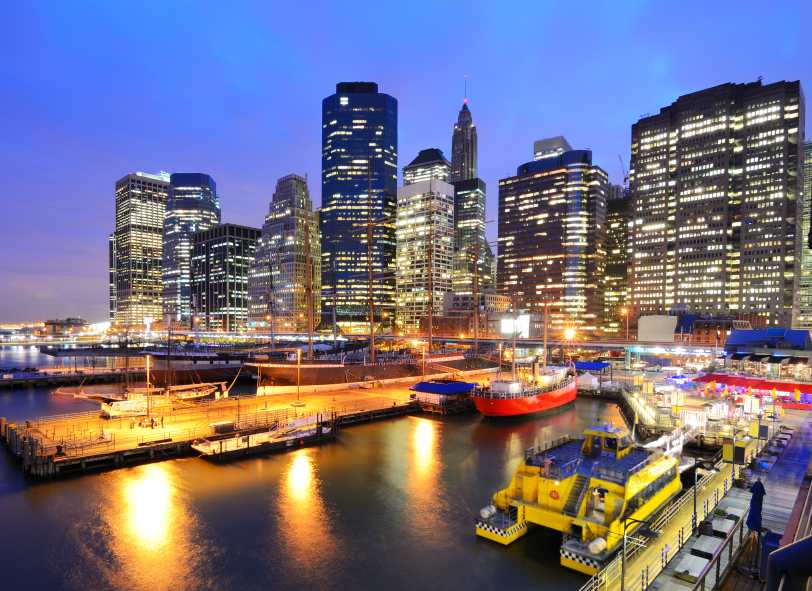Fulton Stall Market
Steps from the luxury condos at 101 Wall, the South Street Seaport beckons and enchants.
A designated historic district, its architecture evokes the maritime spirit of the neighborhood’s past and present—with a New England-esque charm that feels more 19th century than 21st. Coupled with shops featuring local and global merchants, tall ships, cobbled ways, and skyline views of both Lower Manhattan and Brownstone Brooklyn, it’s no wonder the neighborhood is a top New York destination. A world-class museum even fêtes the area’s seafaring heritage. Today, the South Street Seaport is one of Manhattan’s buzziest neighborhoods, but this waterfront district has actually been teeming with activity since the 1600s, when European traders first settled on the island of Manhattan.
Commerce and shopping have long been fundamental aspects of New York City’s culture. These industries got their start in 1625 when Dutch merchants established a trading post and market district in Lower Manhattan along the East River, where many Financial District condos and office buildings stand today. Here, at a series of piers jutting out from the shoreline, merchant vessels could easily unload and load goods originating from or bound for points all over the globe. As commercial activity at the Seaport expanded, so did the system of wharves, counting houses, taverns, and restaurants that supported the industry.
Throughout the 1700s and 1800s, vendors and wholesale dealers lined Pearl Street, Front Street, and Fulton Street, buying and selling tea from China; seafood from North Atlantic waters; indigo, tobacco, and rice from the Southern colonies; spices from the Caribbean; textiles from Europe; and porcelain from Asia. Walking through this neighborhood brings you back in time, when market stalls lined either side of the narrow street selling produce, meats, and staple goods. You can almost hear the call of the foot-peddlers, and the din emanating from the boisterous oyster halls where the local workforce broke for lunch. Through the 1900s, the market districts and waterfront commercial activities of the South Street Seaport were a vital hub in the country’s food chain, serving as the entry and exit point for much of the nation’s commercial goods and foodstuffs.
Today, the Fulton Stall Market continues the tradition of global commerce in the South Street Seaport, housed in a historic merchant building at 207 Front Street. Vendors offer locally farmed produce and goods and provisions made with care, just as they might have back in the early days of the 1700s. But this historic market isn’t just a relic of the past. With events and programming, classes, chef demonstrations, films, and many more family-friendly activities throughout the year, the Fulton Stall Market has reinvigorated the market tradition for the contemporary era.
Every Sunday on nearby Little Water Street, browse the farmers market to find fresh and healthy foods from local farmers and producers, many of whom are on site and excited to tell you about their farms and products. Can’t wait until the weekend? The Country Store is open every day in the Front Street location, stocked with produce and gourmet and specialty foods.
These days, New York has plenty of farmers markets, flea markets, and gourmet food bazaars, but few can claim as unique a tie to Manhattan history as the Fulton Stall Market, New York’s original vendor fair.
Image Courtesy of ©iStock.com/Sean Pavone


